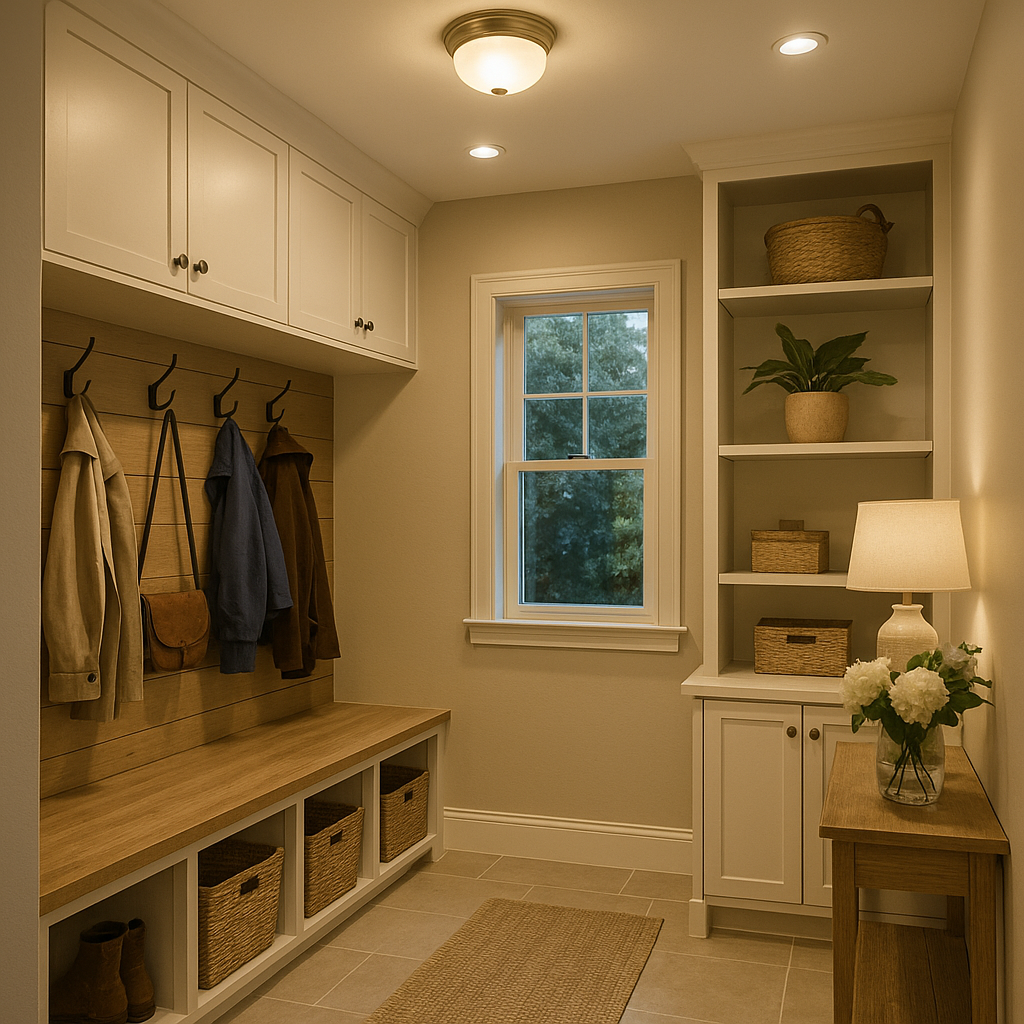A mudroom is one of the most hardworking spaces in any home, serving as the transition point between the outdoors and the living areas. It’s where shoes, coats, bags, and other daily essentials are stored, making it a crucial area for organization and cleanliness. But a mudroom can be more than just a practical entryway—it can also be a warm and welcoming space that sets the tone for the rest of the home.
By combining smart storage solutions with thoughtful design choices, you can create a mudroom that is both functional and inviting. Whether you have a large dedicated room or a small corner by the door, the following strategies will help you make the most of this valuable space.
Understanding the Role of a Mudroom
A mudroom acts as a buffer zone, preventing dirt, mud, and clutter from spilling into the rest of your home. It’s often located near the main entrance, garage, or back door and can serve multiple purposes, including:
- Storing coats, shoes, and outdoor gear.
- Providing a drop-off point for bags, keys, and mail.
- Housing cleaning supplies or pet accessories.
- Offering a place to change footwear before entering the main living areas.
Clarifying the primary purpose of your mudroom will guide the layout and storage choices you make.
Planning the Layout for Maximum Efficiency
The layout of your mudroom should prioritize accessibility and ease of use. Consider these key zones:
- Shoe Storage Zone – Keep footwear organized with racks, cubbies, or pull-out drawers.
- Coat and Bag Zone – Use hooks, pegs, or a coat rack for quick access to outerwear.
- Seating Zone – A bench or built-in seat makes it easier to put on and take off shoes.
- Utility Zone – Cabinets or shelves for cleaning supplies, pet leashes, or seasonal gear.
Mapping out these zones ensures that every item has a designated spot, reducing clutter and making the space more efficient.
Choosing the Right Storage Solutions
Storage is the backbone of a functional mudroom. Depending on the size of your space, consider incorporating:
- Built-in lockers with separate compartments for each family member.
- Open shelving for baskets and bins that hold hats, gloves, and scarves.
- Closed cabinets for items you want to keep out of sight.
- Overhead storage for less frequently used gear, like camping equipment or holiday decorations.
Labeling bins and cubbies can make it easier for everyone to maintain the organization system.
Incorporating Seating for Comfort and Utility
A seating area is one of the most useful features in a mudroom. It provides a place to comfortably put on or remove shoes and serves as an additional storage opportunity. Options include:
- Built-in benches with drawers underneath.
- Storage ottomans that hide items inside.
- Simple wooden benches paired with baskets or crates beneath.
Choosing durable, easy-to-clean materials for seating ensures it will hold up well to daily wear and tear.
Flooring That Stands Up to Heavy Use
Because mudrooms handle a lot of foot traffic and exposure to dirt, water, and mud, flooring choice is critical. Look for:
- Tile – Easy to clean and water-resistant.
- Vinyl – Affordable, durable, and available in a variety of styles.
- Sealed concrete – Industrial strength with minimal maintenance.
Adding a washable rug or mat can help trap dirt at the door and protect the flooring underneath.
Keeping the Space Bright and Welcoming
A mudroom doesn’t have to be purely utilitarian—it can also be a cheerful, welcoming entry point. Good lighting is essential, especially in rooms without natural light. Combine overhead fixtures with wall sconces or task lighting for balance.
Choosing light, neutral wall colors can make the space feel larger and cleaner. If you prefer bolder tones, consider an accent wall or colorful storage baskets for personality.
Adding Personal Touches
Small decorative elements can make your mudroom feel more like an intentional part of the home:
- A framed mirror not only adds style but also gives you a last look before heading out.
- Artwork or family photos bring warmth and character.
- Plants or fresh flowers add life and color, even in a small corner.
The goal is to blend practicality with aesthetic appeal so the mudroom feels inviting rather than purely functional.
Making the Space Pet-Friendly
If you have pets, your mudroom can double as a pet care station:
- Include hooks for leashes and storage for treats and grooming tools.
- Add a built-in feeding station or water bowl area.
- Keep a towel or wipes handy for cleaning muddy paws before pets enter the main living areas.
This integration makes pet care more convenient and helps keep the rest of the house cleaner.
Maintaining an Organized Mudroom
A beautiful, well-planned mudroom will only stay that way with regular upkeep. To maintain the space:
- Do a quick daily check to remove items that don’t belong.
- Sweep or vacuum regularly to keep dirt from spreading.
- Rotate seasonal gear to keep the most relevant items accessible.
By building organization into your routine, the mudroom can remain a tidy and efficient space year-round.
Final Thoughts
A mudroom may be a small part of your home, but its impact on daily life is significant. With a thoughtful layout, practical storage, durable materials, and a touch of style, you can create a space that keeps clutter at bay, welcomes guests, and makes coming and going more enjoyable. Whether you’re working with a spacious entry or just a corner nook, a functional and inviting mudroom is an upgrade every household can benefit from.

